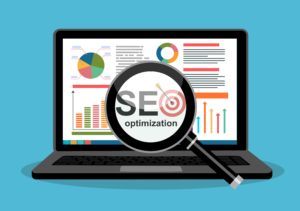
If you operate an eCommerce store and are looking for ways to drastically boost sales from your product catalogue, then Facebook Dynamic Ads could be the perfect marketing tool for you. Rather than requiring you to create tens or hundreds of individual product ads, Dynamic Ads do all the hard work for you. And to simplify the process of getting started here is a straightforward, four-step guide to setting up Facebook Dynamic Ads.

1. Activate your account
First and foremost, you need to ensure your Facebook Business Manager Account is all set up. For now, we will assume you are all ready to go. But if not, you shouldn’t find this step too tricky. Simply head on over to this page here and get started. If you need help, then this guide should help you.
2. Upload your product catalogue
The easiest way to do this is by using a pre-existing built-in integration from your eCommerce platform. If this is not available, an alternative method is creating a .csv file that contains all of your products and the necessary accompanying data. The sorts of info you should look to include will vary depending on the nature of your products. However, Facebook now supports a surprisingly wide range of catalogue fields. As such, you have complete customisation over which fields you wish to include in your ads.
3. Install your Facebook Pixel
The Facebook Pixel is what allows you to track any users who click through one of your Facebook Dynamic Ads to your site. You will be able to track things like:
- categories of products viewed
- exact products viewed
- products Added To Cart
- products purchased
Setting up the Facebook Pixel can be slightly tricky, so we won’t go into depth here. Instead, here is a helpful guide on setting up your pixel.
4. Design an awesome ad template
Now comes the fun part. It’s time to actually design how your Facebook Dynamic Product Ads will look. To do this, you simply create a single template design, with certain fields pulled from your product catalogue. As such, you only need to build one template, but can then generate an almost endless amount of ads based on that one design. That’s why it’s so important to get your catalogue set up properly in step 2. To add in a field, you will need to use this format:
“All {{name}} on sale today at 50% off!”
If you’re looking for help on great ways to optimise your finished Dynamic Ads template, check out this article.
Bonus step… Test your Facebook dynamic ads!
We harp on about this a lot, but it’s well worth including this as a final bonus step. Testing your ads is a crucial part of the process of being successful with any Facebook advertising, but especially Facebook Dynamic Ads! You should constantly be tweaking things like your product images, discount offers and descriptions in order to see which converts at the highest rate.
If this all seems a bit overwhelming then don’t worry, further help is out there. Here at anova, we support businesses all across the UK who are looking to get started with Facebook Dynamic Ads. Our team of specialists know what works and what doesn’t and are continually tweaking and testing new formats in order to maximise ROI for our customers. To find out more, simply get in contact today.


